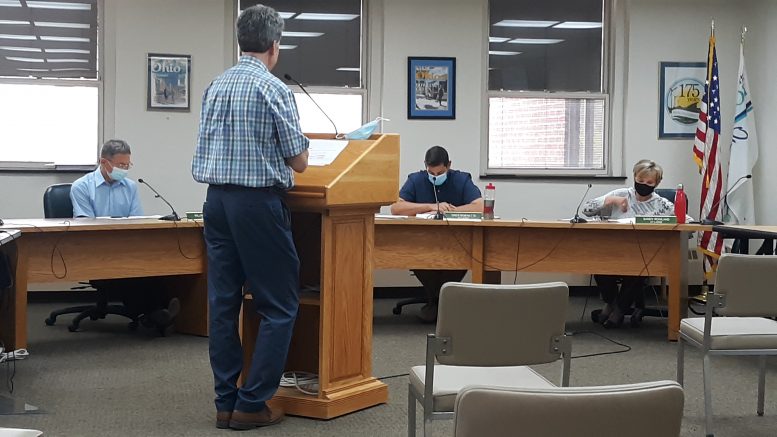By JAN LARSON McLAUGHLIN
BG Independent News
A year ago at this time, Bowling Green officials were wondering how much COVID-19 would sicken the city budget.
As the pandemic wreaked havoc on businesses and individuals, its effects trickled down to local governments, which waited to see how much their budgets would shrink from COVID.
For the city of Bowling Green, the big hurt was expected to be felt in income tax revenue. As city residents made less during business shutdowns, the city collected less income tax.
But a year later, the City Finance Director Brian Bushong was able to report that the city made a pretty quick recovery.
“I’m certainly not coming with a doom and gloom story,” Bushong recently told City Council.
“We did not lay anybody off. We did not cut into any services,” he said.
Bowling Green weathered the pandemic – and this year is looking sunny.
“We have good news. We got off to a very strong start in the year,” Bushong said, noting that the city’s income tax revenue in the first quarter of 2021 is $133,070 over the estimate.
Last May, officials worried about the effect on the city’s utilities of so many businesses and schools closing up shop. Since Bowling Green operates its own electric, water and wastewater utilities, the city felt the drop in usage right away.
As Bowling Green State University and several manufacturers shut down sites, the city saw a plunge in electric and water consumption. Less power going out meant less money coming in. A year ago in May, the electric consumption dropped about 25%.
Some of the manufacturers that didn’t close cut operations from multiple shifts to just one. And BGSU’s move to online courses had a huge effect beyond the classrooms. There were no students on campus running hairdryers or microwaves – and the loss of those small uses added up.
But this year, the city is seeing a rebound in electric use. This first quarter, the revenue is $65,821 ahead of expectations.
“The good news is we’re ahead of our revenue estimate for the year,” Bushong said.
Last year at this time, city parks and recreation programs were on standby, which meant no fees were being collected. The community center was initially shut down, the city pool season dried up, and the newly completed Veterans Building in City Park couldn’t be rented out for use.
But those park programs and facilities are making a comeback.
Last year, the city saw other revenue drop.
The city’s hotel-motel tax was put to bed during the pandemic, with very few people traveling, and even fewer staying at motels.
At the same time, revenue from the gas tax stalled out, meaning less funding for road work. Since the state was collecting less gas tax revenue, it had less to distribute to local governments.
The city was collecting very little from police enforcement of speeding laws or other fines. Last May, local citizens followed requests that they call 911 only in cases of genuine emergencies during the pandemic. So fire division runs dropped during the pandemic.
Just when local governments were enjoying a small rebound in interest rates, the bottom fell out of them last year. While that was great for borrowers, it was bad for local government revenues.
The city’s trash and recycling services are still healthy. Last year, the expenses were $875,000, while revenue was just under $1 million. This year, the garbage and recycling budget is $932,018, with revenue estimated at $995,000.
There are expenses looming, Bushong cautioned – with new garbage trucks costing about $250,000. “We’ve been keeping them together with duct tape and gum in some cases,” he said.
Bowling Green’s ability to weather the pandemic came with some help from federal and state funds. The city has spent close to $2.5 million in CARES Act funds, with the majority being used for safety forces and equipment.
The city is projected to get $7.3 million in American Rescue Plan funds – with half coming now and the other half next year. The strings attached to how that money can be used are forthcoming.
Through it all, Bowling Green was able to retain its Aa2 bond rating from Moody’s.
“That’s a great rating,” Bushong said.
Moody’s listed Bowling Green’s credit strengths as:
- Institutional stability provided by BGSU.
- Healthy operating fund balance and liquidity.
- Significant liquidity held in self-supporting city owned utilities.
The credit challenges listed were:
- Wealth and income metrics trail sector medians for the Aa rating category.
- Modest dip in income tax collections stemming from economic impacts of the pandemic.
- Exposure of two underfunded cost-sharing pension plans.


